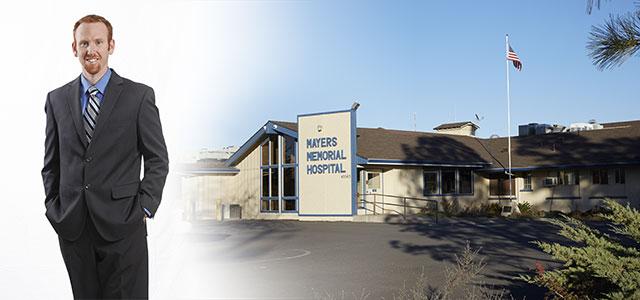
Louis Ward, MS
MS-HAIL Program Propels Graduate to CEO Position
Louis Ward was a member of the initial cohort in the UCSF Master of Science in Healthcare Administration and Interprofessional Leadership (MS-HAIL) program at UC San Francisco School of Nursing.
While in the program, Ward continued working full-time as director of support services for Mayers Memorial Hospital District, a 25-bed critical access hospital and two 50-bed skilled nursing facilities in northeastern California.
Before starting the MS-HAIL program, Ward was offered the position of chief operating officer (COO) contingent on his graduation. The hospital district kept its word, but Ward’s role as COO was short-lived. Seven months after he started, Ward was offered the position of interim chief executive officer (CEO), overseeing some 270 employees. Just under four months later, the hospital district removed the “interim” from Ward’s title and rewarded him with a permanent contract.
I have an undergraduate degree in public administration and had fallen into health care when we moved to Fall River Mills in Shasta County, Calif. But after a couple of years on the job, I knew if I wanted to make this a career, I needed more education, an advanced degree and a better understanding of the clinical side of things. Yet I also knew I needed an online program. My wife is a stay-at-home mom, and we have three kids, so I needed to work and didn’t want to travel. The admission specialist at UCSF was very helpful; she really worked with me to understand how the program would fit into my personal life.
I don’t think I would have been in a place to move into this CEO role without the advanced degree, the leadership components of the program and the interactions with my classmates. On an almost daily basis, I think back on something an instructor said or something I read in the course materials or an interaction I had with a classmate.
The beauty of health care is that we are all here for the same purpose: to provide the best health care possible. But we all have to look at that goal through a different lens. Every piece of the organization, every decision we make affects the patient, so it’s important in my leadership role to understand why different people in different roles make the decisions they make. All of the different backgrounds in my cohort helped me see that; the insights I got from my classmates and the program were invaluable.
It was more than just understanding the different roles from an academic perspective. In the program, we all became very dependent on each other to succeed; there were many nights we would provide feedback to each other on a paper or project, and we all really pulled for each other.
It wasn’t easy, but the best things in life are usually the more difficult ones, and once you get to the other side, the opportunities are endless. The program introduced 40 extra hours into my workweek, but the beautiful thing was that there were 25 other individuals who were tackling the same challenge. These people are now lifelong friends to whom I can and do reach out for a third-party perspective on real-world problems.
For example, Stacy McLachlan is a nurse and obstetrics (OB) manager at a Southern California hospital. Two weeks into my role as CEO, I ran into an OB-related issue and consulted with Stacy to get a better understanding of the best process for making an important decision about medical policy. You can read a million things through Google or consult with people on-site, but there is nothing more valuable than having the objective opinion of someone you trust who is an expert in the field to help you make a fully informed decision.
On a day-to-day basis, I’ve also found the leadership component of the program incredibly important. I have roughly 270 employees, and they all bring something unique to the table; every five minutes I’m working with someone different. UCSF was very good at helping me understand, for example, why some physicians hold so tight to the way they’ve always done things. And when I need to make a change, I spend a lot of time thinking these things through before having the necessary conversations. Of course, you can’t classify people by their profession only, but you can get a good understanding of how a person’s profession contributes to what makes them tick.
All of this is an enormous help when we’re implementing new processes, and it helps me keep solid relationships with my staff, versus just being “the boss.” Here at Mayers Memorial, we have more of a level playing field. I know how to convey that I care about people’s jobs and care about health care quality – it’s not just about financial indicators. I am a 100 percent believer in looking at the entire picture. Health care doesn’t really need a leader who looks only at the bottom line. We always have to look at patients, and if we make a financial decision that negatively affects patients, then we’ve made a mistake because the results of that decision will come back around in some way. If we do have to cut services, we have to show patients and staff how things can be better in the long run.
That’s the program’s influence. It moved me from being more of a transactional person to more of a transformational leader, and I think it is creating a new school of thought and a new type of health care leader.



